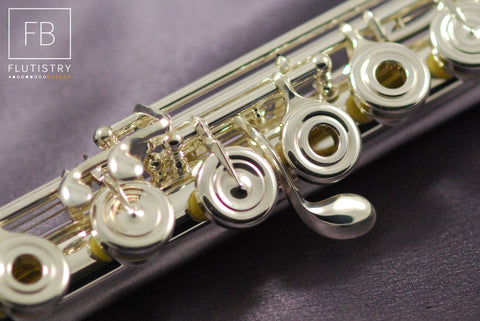

Wooden flutes have a cylindrical bore in the head and a conical bore in the body.
#Artley flute serial numbers full#
As the scale progresses, XXX-XXO = E, XXX-XOO = F#, XXX-OOO = G, XXO-OOO = A, XOO-OOO = B, OOO-OOO = C#, with XXX-XXX or OXX-XXX being the higher octave D for the full D major scale. For a D flute (the most common variety), with X symbolizing a covered finger-hole and O symbolizing an uncovered finger-hole, all holes covered, (three fingers per hand) can be represented as XXX-XXX = D. The E-flat, B-flat and C versions are transposing instruments. The name D-flute comes from the fact that the simplest 6-hole wooden flute has D as its lowest note and plays the scale of D without any cross-fingering. Although referred to as a D flute, this is a non-transposing instrument, so if you finger C, a concert-pitch C is sounded. Though most commonly pitched in the key of D, simple system flutes are available pitched in other keys, and are often heard in Irish music pitched in E flat, B flat and C. Most Irish flute players tend to strive for a dark and reedy tone in comparison to classical flautists. Due to its wooden construction, characteristic embouchure and direct (keyless) fingering, the simple system flute has a distinctly different timbre from the Western concert flute. Most flutes from the Classical era, and some of modern manufacture include metal keys and additional tone holes to achieve partial or complete chromatic tonality. The Irish flute is a simple system, transverse flute which plays a diatonic (Major) scale as the tone holes are successively uncovered.


 0 kommentar(er)
0 kommentar(er)
